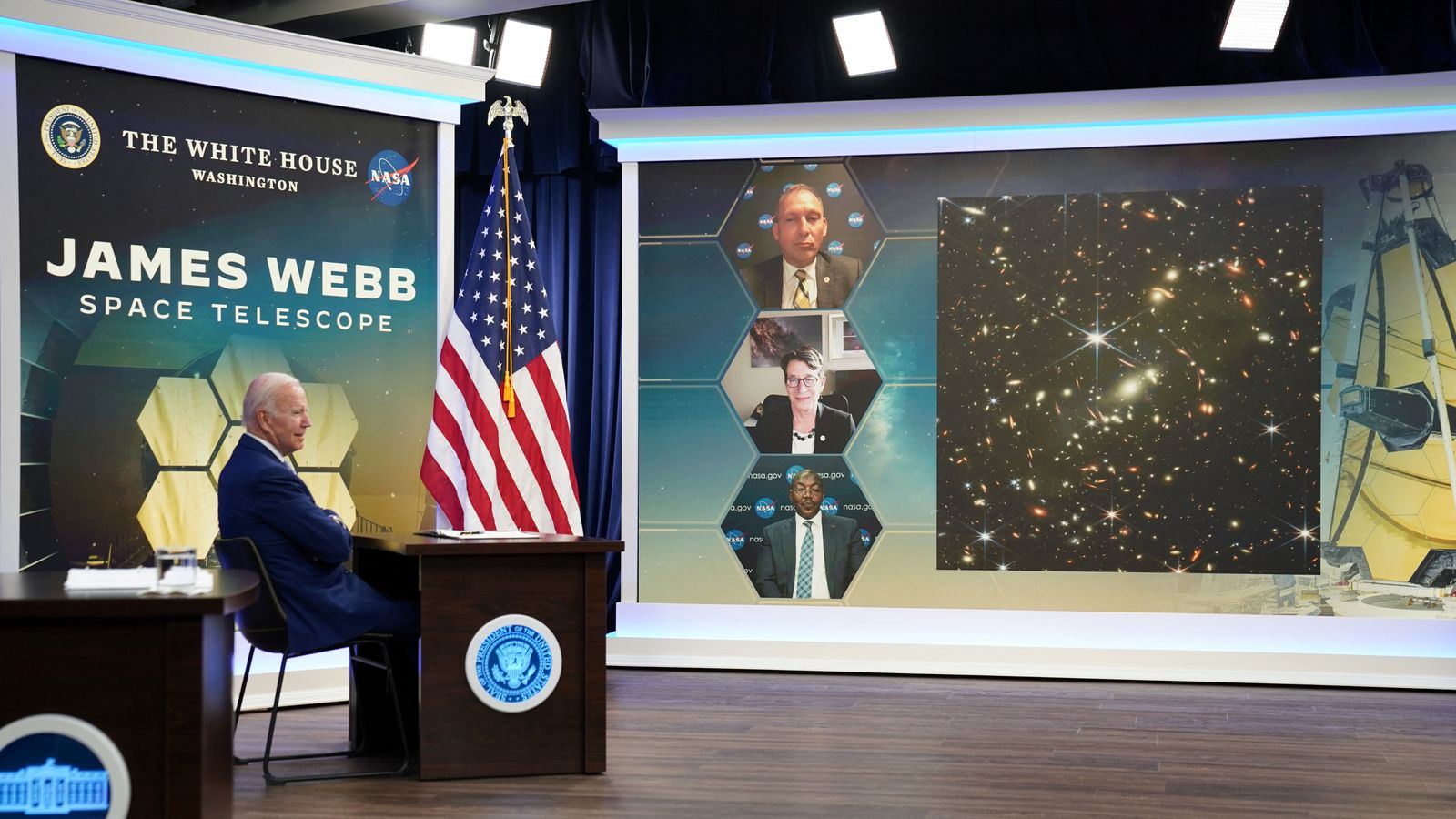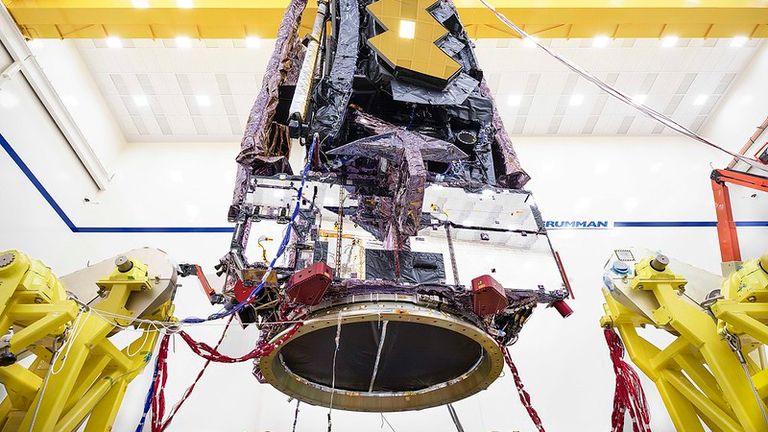To those of us who aren’t astronomers, it’s hard to see what the big deal is.
An image of points of light, coloured blobs and spirals of galaxies of the kind we’re familiar with.
But in fact, this image is something very different indeed.
Compared to the previous picture of this region of space captured by the Hubble Space Telescope, the image from the James Webb Space Telescope (JWST) is jam-packed with galaxies.
These are new objects, likely never seen before through any telescope.
This new view of the universe is possible because the Webb is huge – with a mirror more than twice the size of the Hubble.
But as well as that, Webb sees infrared light.
The universe has been expanding for 13.8 billion years, meaning the light from the first stars and galaxies has been “stretched” from shorter visible wavelengths to longer infrared ones.
This is what allows Webb to see the universe in unprecedented new detail.
That detail may be pretty to us, but it’s a rich seam of new data for astronomers, astrophysicists and cosmologists.
But, this image excites those experts for another reason – it’s looking further back in space and time than ever before.
It’s not just a picture of any random bit of space. At its centre, you can see the hint of a spherical-like object traced out by curved and distorted galaxies.
This is a gravitational lens, a natural, if mind-boggling, feature of the universe predicted by Einstein’s theory of general relativity.
A huge cluster of galaxies in the centre of the image is so massive that is distorting space, bending the light that travels through it and magnifying the objects behind it.
Hiding in this image, brought into crude focus by this gravitational lens, are quite probably the oldest galaxies we’ve ever seen.
Their light, when analysed carefully by other instruments on JWST, will give new insights into the earliest time in the universe just a few hundred million years after the Big Bang.
It’s an image that’s a window into a new way of understanding how the universe we live in came to be.
And it’s just the first of millions that this new telescope will produce over its 20-year lifetime.



